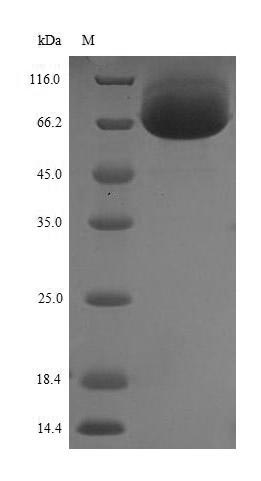The recombinant Human DPYSL5 was expressed with the amino acid range of 1-564. The calculated molecular weight for this DPYSL5 protein is 66.4 kDa. This DPYSL5 protein is produced using e.coli expression system. The N-terminal 10xHis tag and C-terminal Myc tag was fused into the coding gene segment of DPYSL5, making it easier to detect and purify the DPYSL5 recombinant protein in the later stages of expression and purification.
Human dihydropyrimidinase-related protein 5 (DPYSL5) functions as a key player in various cellular processes, notably in cellular signaling and differentiation. Its primary role involves the regulation of cell growth and differentiation, contributing to the intricate balance of cellular physiology. DPYSL5's involvement in signaling pathways makes it a subject of interest across diverse research areas. In cancer research, DPYSL5 may be explored as a potential biomarker or therapeutic target, unraveling its impact on cell proliferation and invasion. Additionally, its relevance in neurobiology could be investigated to understand its role in neuronal function and potential implications in neurodegenerative disorders.






